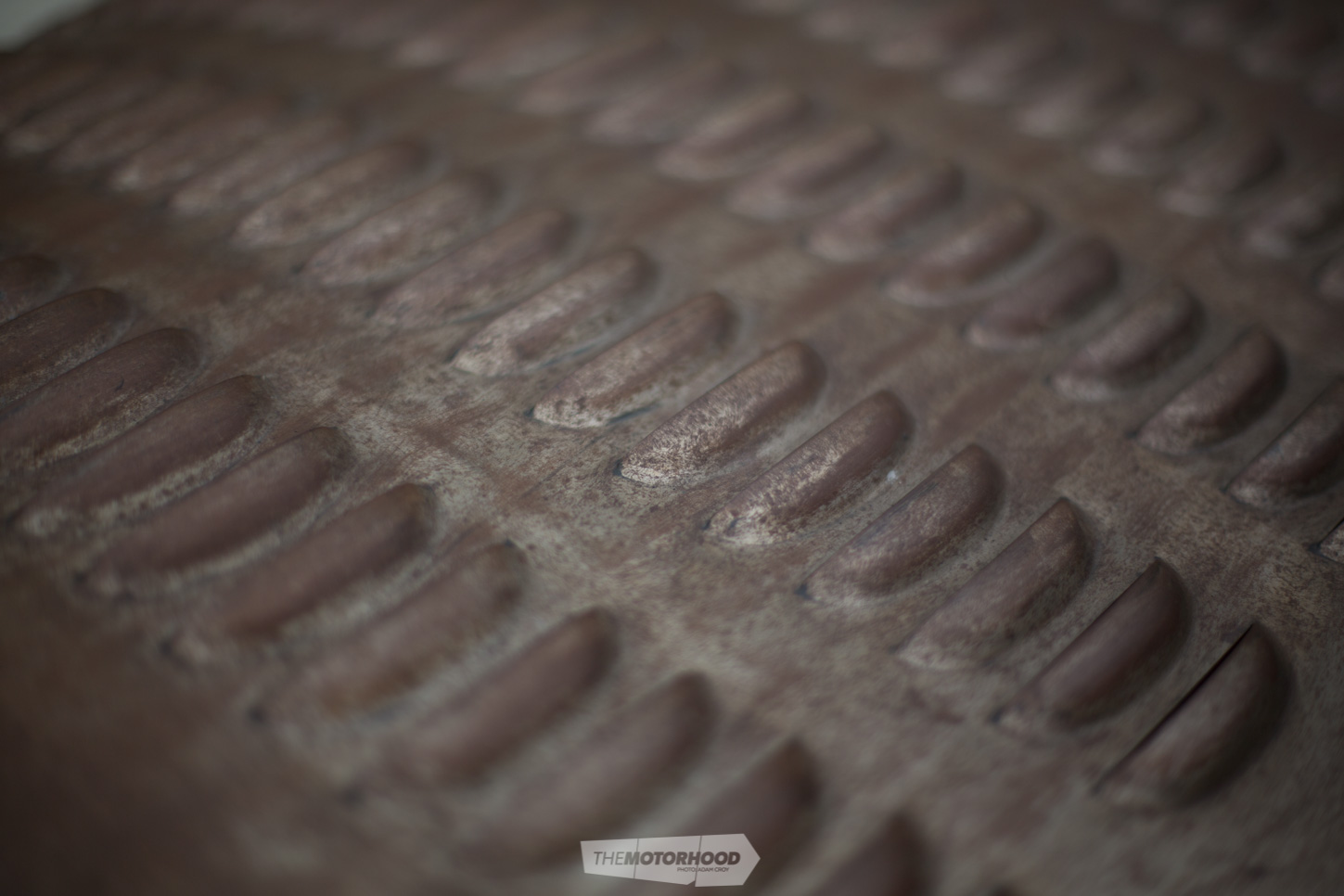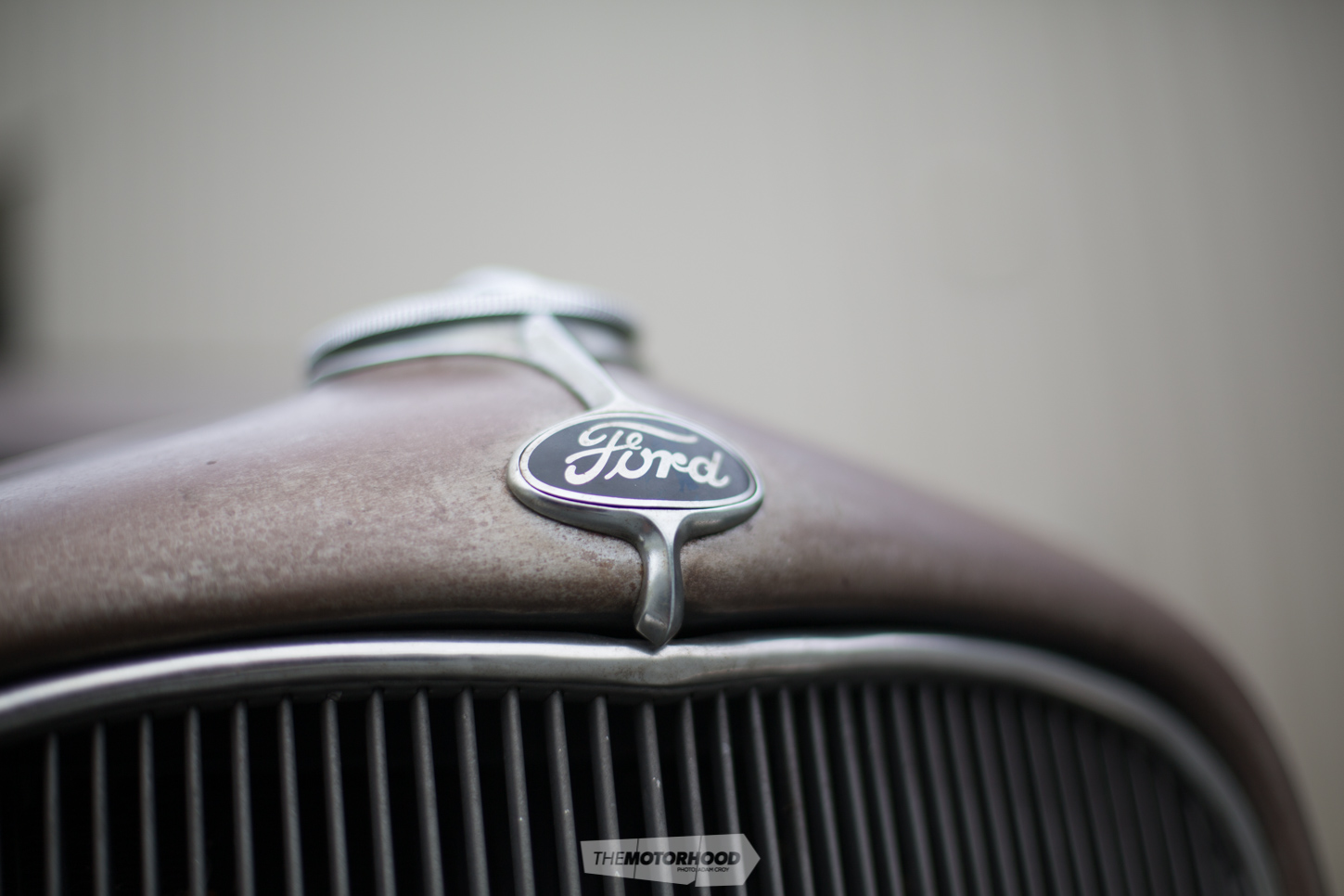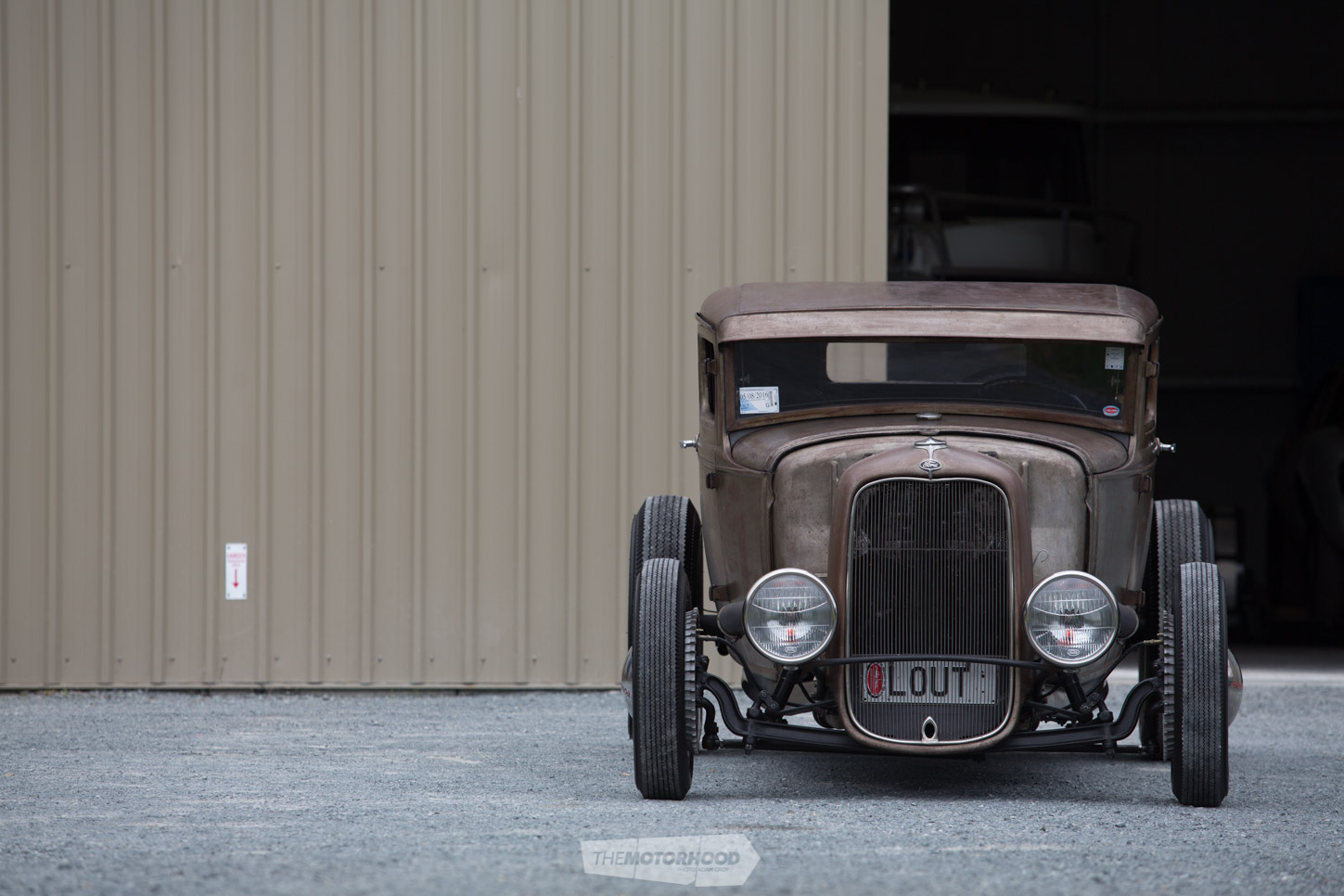Glenn Longley’s chopped Model A coupe seamlessly blends a hefty new-school punch into a beautifully old-school package

The worst nightmare of every ’50s mother was not the onset of war, or the prospect of Camel Lights going out of production, or even Mrs Smith across the street getting the latest refrigerator — it was the thought of her daughter associating with a man who drove a car that looks like this. Times change, and so do style, trends, and attitudes. Badass is still badass, though, and the essence of ’50s aggression exuded by this menacing hot rod is just as potent now as it was then.
It’s that distinct character that makes Glenn Longley’s ’30 Model A coupe so much more than the sum of its parts. Strip it down, and the pile of physical parts would be tiny in comparison to many other cars, but you know what they say about quality over quantity. Glenn’s coupe has what matters in spades — it’s got an excess of attitude. So how did it all come about? “I was overseas, around three years ago, and had just gotten food poisoning,” Glenn tells us — which isn’t how these stories usually begin. “I was at Base Camp at Mount Everest, and got food poisoning. I had to wait a day before I could come home, so I began searching the web and found this on Tony House’s website [House of Hotrods]. As soon as I got home, I rang him and was told that it was going to be landing that day.”
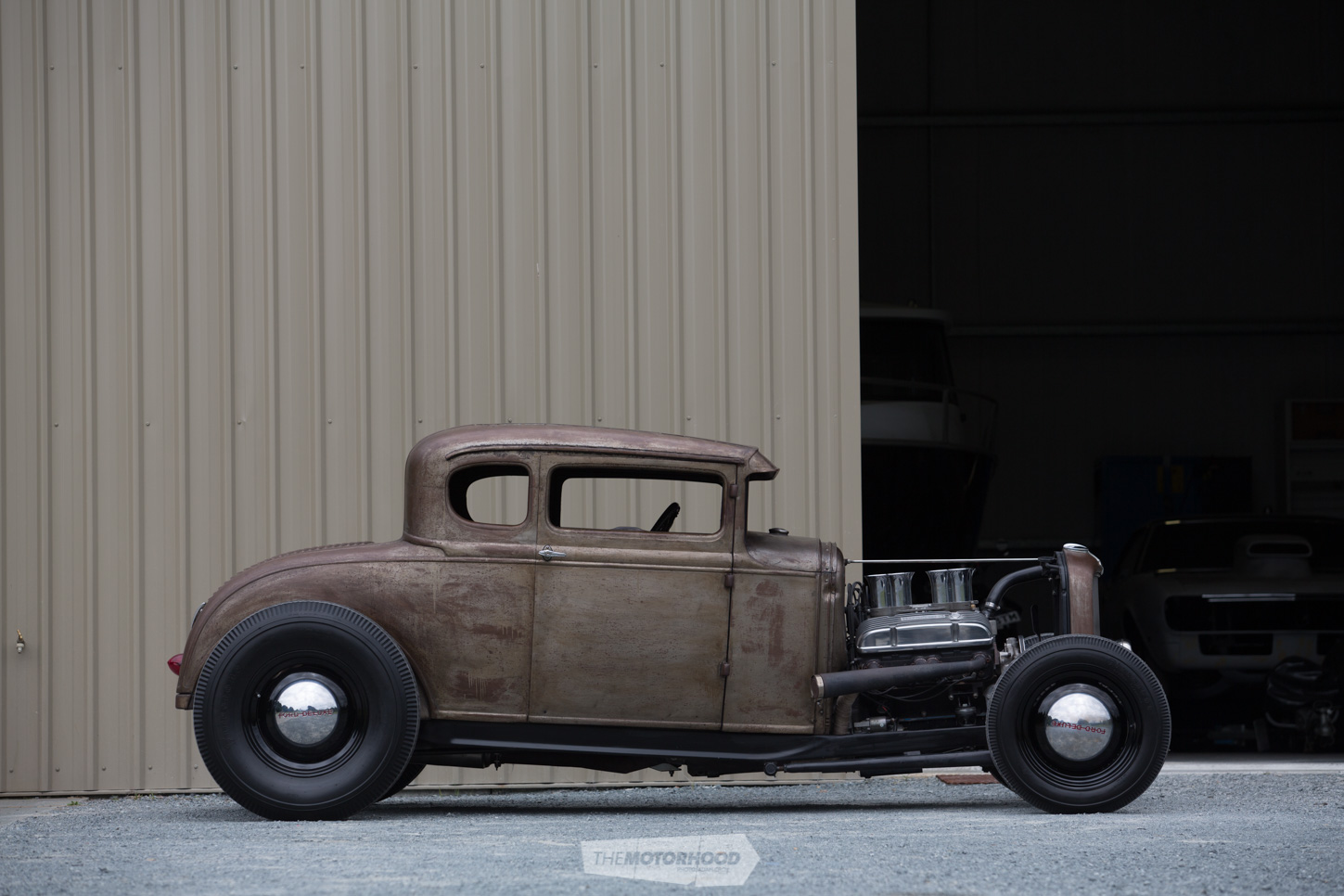
You can probably figure the rest of the story out. A roof-chopped, all-steel Model A coupe with triple-carbed small block, Tremec T56 six-speed manual transmission, and nine-inch out back certainly explains Glenn’s great expectations, but the initial joy of taking possession of such a cool vehicle was short-lived. “The driveshaft destroyed itself the second time I drove it,” Glenn says. “I was cruising in fourth gear, and boom! It wrecked everything — gearbox, diff, the floor …” Understandably, after such a setback, Glenn left the coupe alone for around 18 months rather than rush into a rebuild. “I’d bought another T56 transmission out of a Camaro. Then, two weeks out from Beach Hop, decided to get it going.” He managed it, but, with the whole lot together, it had to be pulled apart again at 9am on the Wednesday to sort out a spigot bush problem. However, it was ready by nightfall.
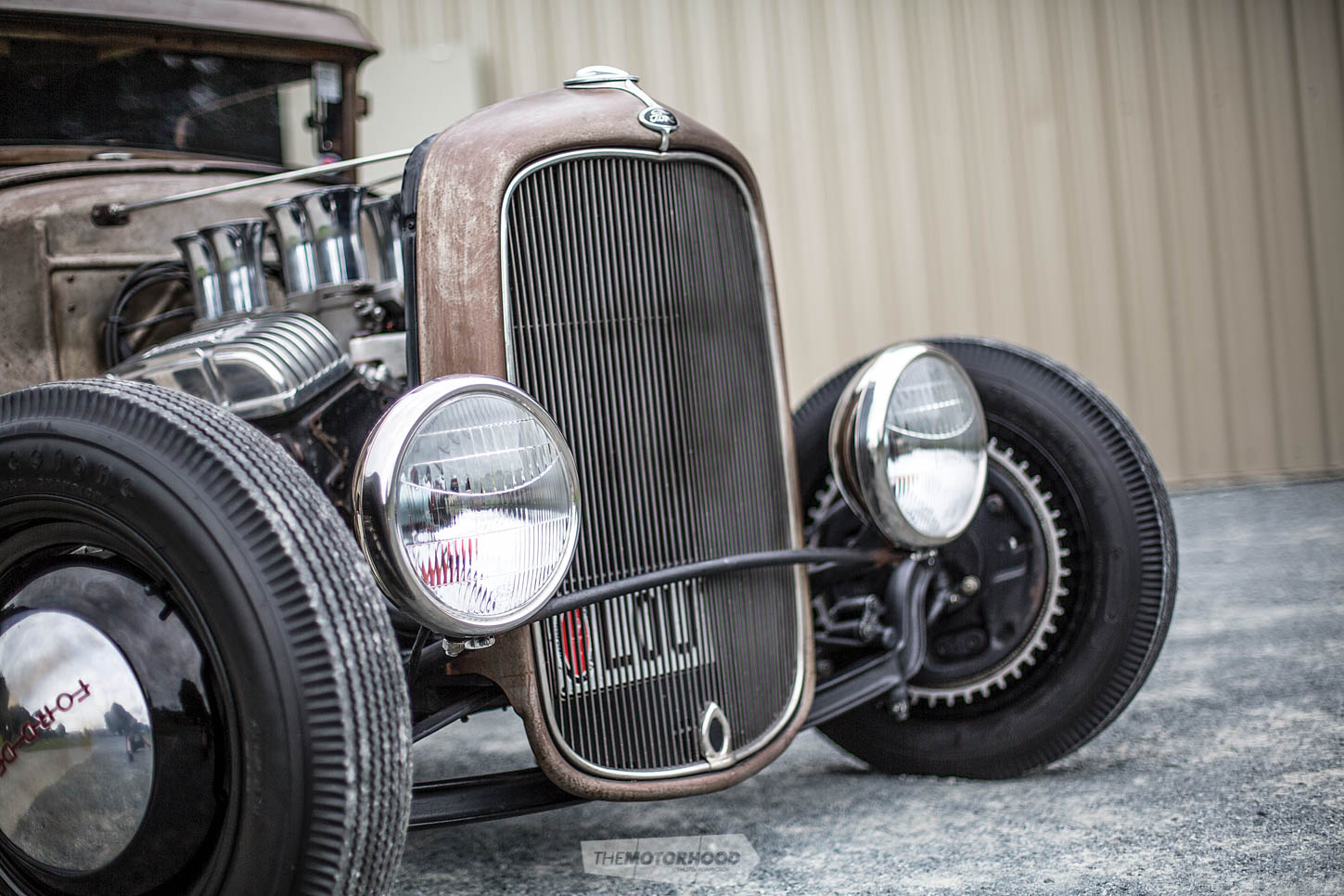
“We drove down in the dark, with no windows and the missus wrapped in a blanket,” Glenn recalls. “It squeaked and vibrated so much. Dad was following us in his ’55, and his headlights reflected straight off my windscreen, so I had to get right down to see where I was going.”
They had a great time, though, and this, coupled with the Model A’s various shortcomings, provided just the motivation Glenn needed to tuck into a full-on rebuild. First, though, he had to pinpoint all of the odd noises and vibrations that he was trying to eliminate. Being a fitter and turner by trade, and having an enviable array of tools and machinery at his disposal, Glenn was in a good position to handle the bulk of the work at home. The new floor was grafted in, with a transmission tunnel to clear the bulky T56, and much of the structural woodwork was replaced.
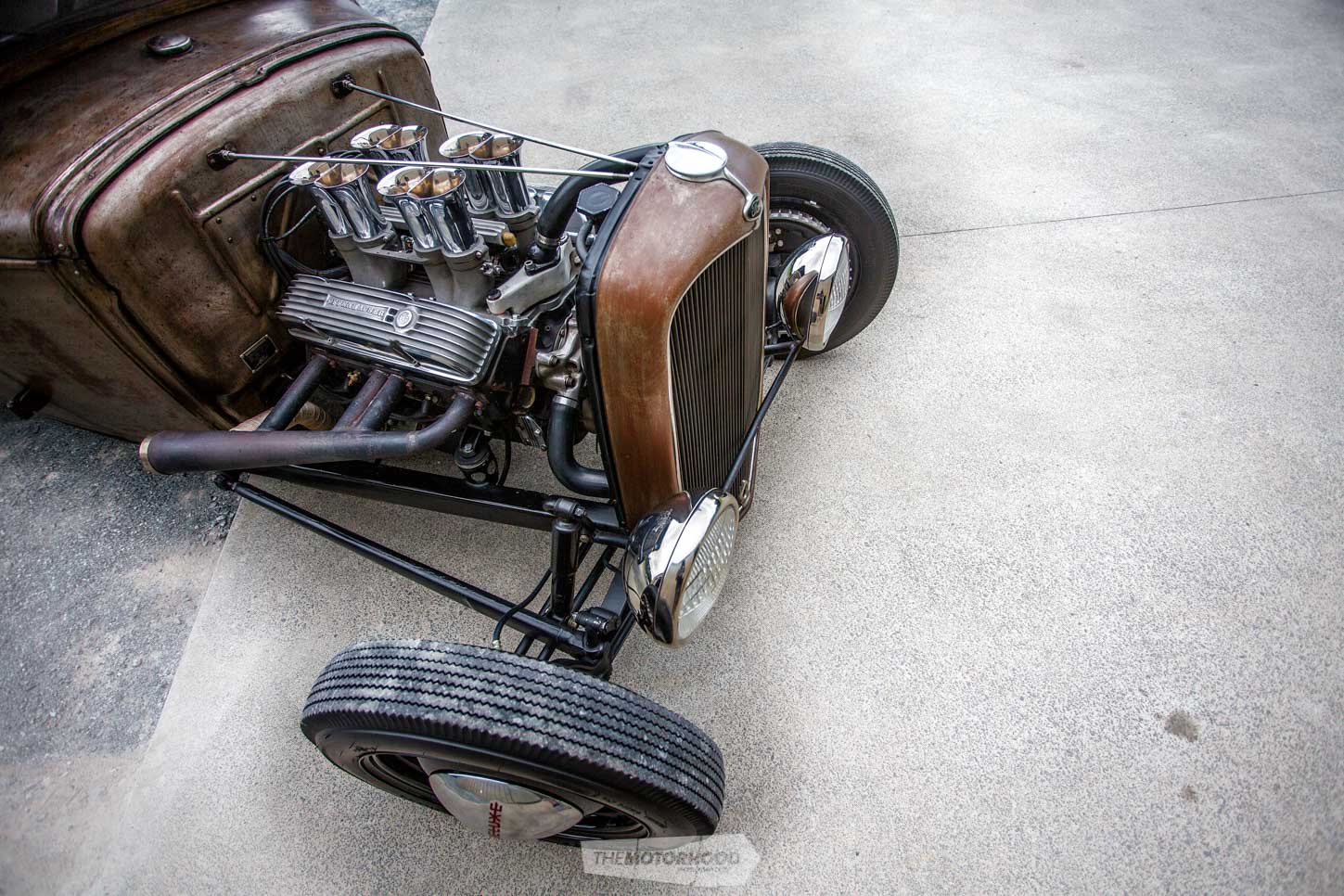
“The other problem was under the bonnet — figuratively speaking, of course … Glenn wasted no time in snapping the [Hilborn mechanical-fuel-injection set-up], complete with small block Chev manifold, throttle bodies, and ram tubes”
Glenn also needed to perform a touch of surgery on the A-pillars, which required re-chopping to stop the doors from squeaking. The interior panels were subjected to a healthy coating of LizardSkin sound deadener — it hasn’t made for a refined cabin, but at least in-car temperatures are more bearable, especially on hot summer days. The other problem was under the bonnet — figuratively speaking, of course. The 350ci small block Chev was fine, but it didn’t quite offer Glenn the level of performance he was after. Originally fitted with triple Rochester 2GC carbs, the outer two had been blocked off for ease of tuning, so you can guess how marginal its performance was.
As luck would have it, a mate of Glenn’s was looking at getting rid of a Hilborn mechanical-fuel-injection set-up, as it was going to cost him too much to get it going properly. Knowing he was looking at a bargain and a solution for his power problems, Glenn wasted no time in snapping the system up, complete with small block Chev manifold, throttle bodies, and ram tubes. Since Glenn wanted an engine that was smooth, reliable, and had power to burn, he had no interest in keeping the mechanical fuel delivery. It was here that his experience as a fitter and turner really came in handy, as he proceeded to convert the system to EFI.
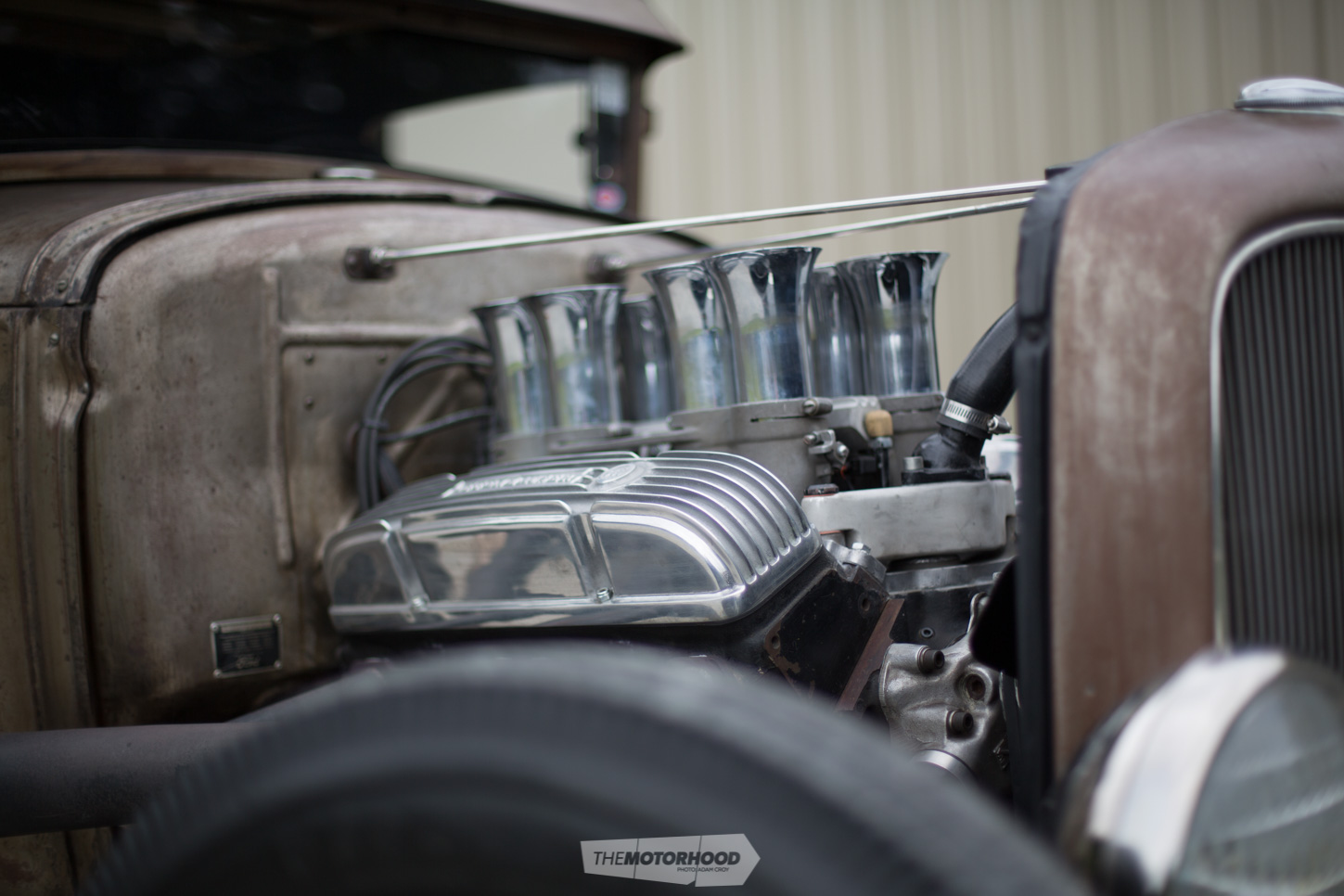
The manifold was modified to accept fuel injectors from Glenn’s mate Carl Thompson’s huge-horsepower turbocharged rotary drift car, and Glenn spent a lot of time modifying the butterfly valves to open in a way that complemented the fuel delivery from the injectors. He also custom machined an impressive fuel rail, including ridges to match the vintage Offenhauser rocker covers. While he was at it, he made up a custom thermostat housing to run a water-temperature switch. The system is so well presented that it could pass for a vintage mechanical injection set-up unless you look a little more closely.
To operate the Link G4 ECU he was planning to run the EFI with, Glenn also made the move towards a Holden VT V8 distributor, which includes a Hall effect sensor. The guts of the distributor were required, and Glenn machined up a custom driveshaft that would allow the distributor to work with the Chev engine. As an extra hurdle, this was all done the night before he was due to take the car to Glenn Suckling at GDS Automotive for dyno tuning. The result was a healthy 340hp at the wheels, with the potential for even more should Glenn ever decide to get a tune with uncapped headers.
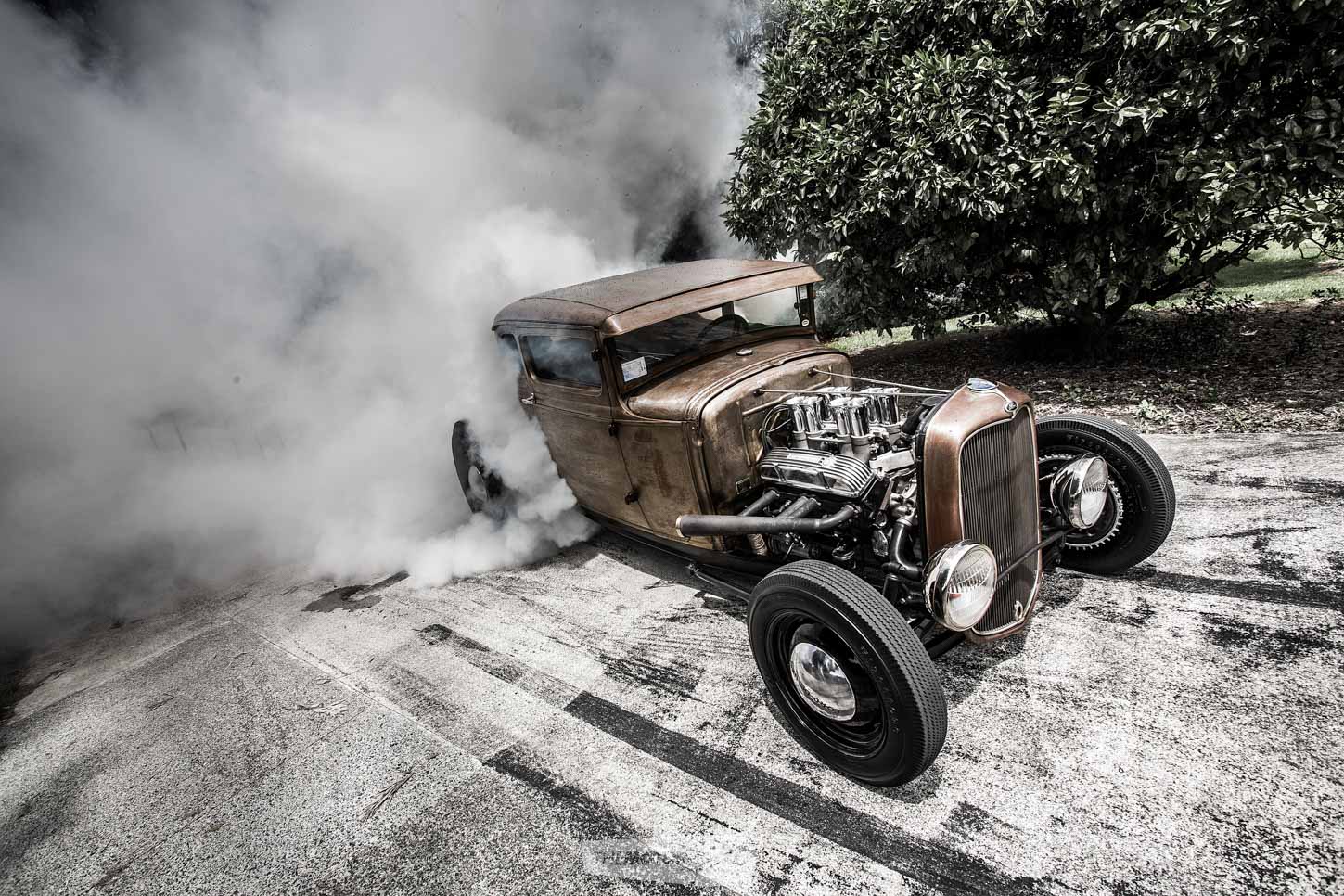
For now, Glenn is happy with ‘LOUT’ just the way it is. “I’ve maxed fourth gear down the straight at Hampton Downs — lucky the brakes work all right!” he says, and he has run a 14.01-second quarter-mile, despite the clutch beginning to let go in fourth gear. Not only does the Model A go like proverbial shit off a shovel, but it also actually drives and handles pretty well, in spite of the 80-year-old suspension technology and skinny cross-ply tyres. Of course, you feel every bump and imperfection in the road, but that just makes the experience much more tangible, especially when Glenn chops it down a gear, buries the gas, and the little coupe flies towards the horizon as the Stewart Warner tacho needle screams into the danger zone.
What really makes this car what it is, though, is not its nonchalantly aggressive demeanour or its traditionally cool style, but its owner and his relationship with it — Glenn doesn’t bubble wrap it but thrashes it to within an inch of its life, exactly as such a car deserves and demands to be driven. It’s a reliable cruiser that starts first pop, goes like stink, and will take a beating all day long, but it’s an old-style hot rod first and foremost — the fact that Glenn treats it like one is the icing on the cake.
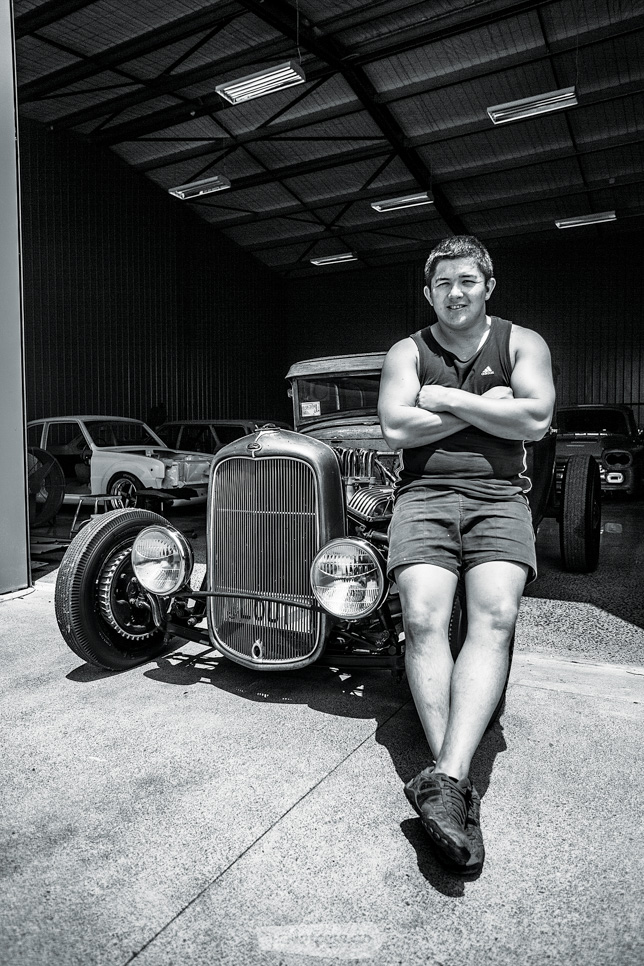
“We drove down in the dark, with no windows and the missus wrapped in a blanket,”
Glenn Longley
Car club: Pukekohe Hot Rod Club
Age: 30
Occupation: Engineer, fitter/turner
Previously owned cars: 1963 VW Beetle
Dream car: I’m happy with my coupe
Why the Model A? I always wanted a ’32 coupe, but I don’t have that sort of money. The Model A was the next best thing.
Build time: Ongoing project over the last three years
Length of ownership: Three years
Glenn thanks: My family for all their help — Mum, Dad, and my girlfriend, Ash, for putting up with all the late nights in the shed; my brothers Sam, Robbie, and Adam; Grogger, James, Carl, Tom, Debs, Glenn Suckling at GDS Automotive
1930 Ford Model A coupe
Engine: 350ci small block Chev, 327 ‘350hp’ Corvette camshaft, EFI-converted Hilborn eight-stack fuel injection, custom fuel rail, Lake-style headers, modified Holden V8 distributor, Link G4 ECU, custom thermostat housing
Driveline: Tremec T56 six-speed manual, Ford nine-inch diff, 4.11:1 final-drive ratio
Suspension: Chassis Engineering four-inch dropped axle, 1942 Ford wishbones, Speedway Motors front mono-leaf spring, Pete and Jake’s ladder bars, 1946–’48 rear buggy spring, Chev Vega steering box
Brakes: Buick 11-inch finned drums, Ford rear drums, line-locker
Wheels/Tyres: 16-inch Ford steel wheels, Firestone cross-ply tyres
Exterior: Five-inch roof chop, Brookville Roadster deck lid, Vintique ’32 Ford radiator shell and insert, modified Model A headlight bar, 682 Guide headlights, ’53 Buick tail lights
Chassis: American Stamping Corporation chassis rails, sectioned two inches through the centre
Interior: Original Model A seat, ’34 Chev Master dash, Stewart Warner gauges, 17-inch sprint car steering wheel, home-made steering column
Performance: 340hp (at the wheels); 14.01-second quarter-mile







